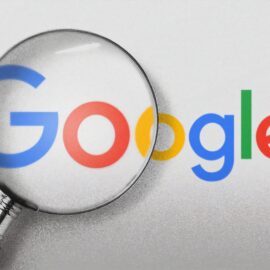
This is a free excerpt from one of Shortform’s Articles. We give you all the important information you need to know about current events and more.
Don't miss out on the whole story. Sign up for a free trial here .
What is dynamic pricing? Who does dynamic pricing benefit and harm?
Dynamic pricing, also known as surge pricing, is spreading across US industries—from flights and rideshares to restaurants, retail, and entertainment. Dynamic pricing can help companies, but it’s also criticized for exploiting consumers, harming lower-income buyers, and eroding customers’ trust.
Here’s a look at dynamic pricing pros and cons.
Dynamic Pricing Is Spreading
Dynamic pricing is spreading across US industries. As more sectors adopt the profit-boosting tactic, debate is intensifying over whether it’s a fair practice or price gouging.
What Is Dynamic Pricing
Dynamic pricing is a strategy companies use to optimize revenue by charging higher prices during periods of high demand and lower prices during periods of low demand. The tactic enables businesses to adjust prices for goods or services in real-time based on a host of factors, including current market demand, supply, competitors’ prices, consumer locations, special events, weather, and time of day—all of which companies are increasingly turning to AI algorithms to track. Dynamic pricing allows companies to maximize profit by aligning staffing and other operations to demand.
In recent years, dynamic pricing has expanded beyond travel, concerts, and car services into traditionally fixed-priced sectors, including bowling alleys, gyms, and grocery stores. The price strategy’s reach is grown as companies seek new revenue streams in response to rising costs and tighter profit margins.
The expansion of this practice has fueled debate about dynamic pricing’s pros and cons.
Dynamic Pricing Pros
Proponents like economists and free market advocates argue that dynamic pricing benefits companies and consumers by:
- Maximizing businesses’ control and revenue. Dynamic pricing enables companies to review and change their prices in real-time and in response to rapidly evolving factors and circumstances. Without the pricing strategy, companies lose potential profit.
- Helping balance supply and demand. Higher prices reduce frivolous demand so goods and services are available for those who truly need and want them. Dynamic pricing also incentivizes increasing supply to meet demand.
- Allowing companies to cope with rising costs and remain competitive. Companies struggling amid inflation have a better chance at survival if they can raise prices to cover cost increases.
Dynamic Pricing Cons
In contrast, consumer advocates and customers criticize dynamic pricing as unfair price gouging that:
- Exploits customers. When companies hike prices on essentials or for special events, they leave customers little choice but to pay more.
- Disproportionately harms lower-income consumers who can’t afford dynamic prices. This makes public transit, family activities, holidays, and other necessities unaffordable.
- Violates norms and erodes customer loyalty. Sectors like retail historically had fixed, transparent pricing, so all could afford basic necessities. Frequent, opaque, algorithm-driven price changes confuse customers and undermine trust.
Looking Ahead
Some experts, including the creator of computerized dynamic pricing models used by Delta, Marriott, and Hyatt, predict that the widespread adoption of dynamic pricing is inevitable.
Other experts note that the success of expanded dynamic pricing strategies will depend on how transparently companies communicate price changes to customers and how much customers push back. Their appetite for the practice may wane as costs, corporate power, and growing inequality rise.

Want to fast-track your learning? With Shortform, you’ll gain insights you won't find anywhere else .
Here's what you’ll get when you sign up for Shortform :
- Complicated ideas explained in simple and concise ways
- Smart analysis that connects what you’re reading to other key concepts
- Writing with zero fluff because we know how important your time is







I call it price bouncing and it is wrong unmoral and unethical because the way it is being used right now. To Get peoiple to not be sure what true price is or what a good deal is. Then they
moved on to unequal charging for the same item charging more for a ite because they got away with it. That I call stealig. Now there usng it to kill the other businesses that compete
with them. They are all using the sae software Amazon Walmart and Target Amazon wil be lowest most the tie by a little target and wal mart about equal. They inch the prices by running out of a product they truley have plenty of and all sorts of games to Steal.